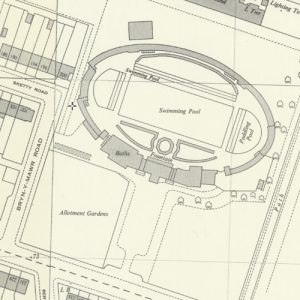
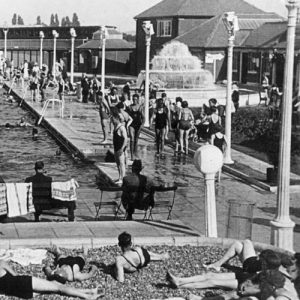
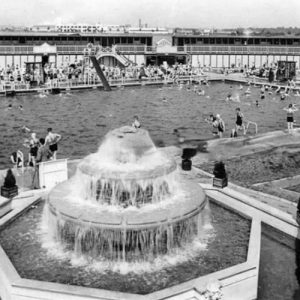
Enfield Baths was a fairly standard rectangular pool surrounded by a huge oval stadium with extensive support buildings. When the pool opened in 1932, it was lauded as the “largest” in London but as we have discovered, that is dependent on the criteria. Clearly the author had not heard of Tooting (1906, 300’x100′, 1m gallons)! There was plenty of room for bathers; the changing accommodation could handle up to 1,000 at any one time.
There was also plenty of space for sunbathers. There was a beach 80’ x 40’ that was formed with shingle brought from the beaches at Folkestone.
By August 1932 the pool was proving extremely popular; the Sunday Express reporting that “Seven thousand two hundred people paid for admission to Enfield Baths—the third time in the week that the record had been broken”.
Gas-powered floodlighting was added in 1934.
In March 1967, closed-circuit TV was lauded in the London Evening News as a life saver. It had been installed at Enfield Baths and relied upon a person constantly observing the water in the 12’ 6” deep end. One life had already been saved at Enfield.
The pool was closed during the 1980’s and left derelict for a number of years. At some point, the Hyg-gard-all hanging system had been introduced, evidenced by a couple of repurposed hanging baskets in my garden…
| Name | Enfield Baths Enfield Playing Fields, Southbury Road, LB Enfield, EN1 3SX, England |
| Coordinates | 51°39’04.0″N 0°03’48.6″W |
| Built / opened | 4th June 1932 |
| Cost | £27,000 |
| Dimensions | 200′ x 80′ |
| Capacity | 500,000 gallons |
| Water type | Fresh water |
| Depth(s) | To 12′ 6″ |
| Diving | |
| Changing facilities | 324 cubicles and 4 common dressing rooms. 1,283 Milner steel lockers |
| Second pool | Semi circular paddling pool |
| Spectator seating | |
| Designer | H R Crabb |
| Date closed | Late 1980’s |
| Status | Demolished 1991 |
| On site now | McDonalds restaurant and car park |
| Last updated | 21st September 2025 |
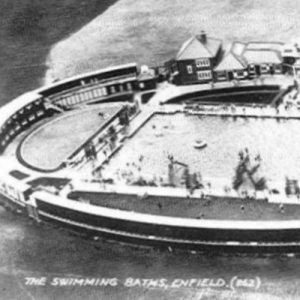
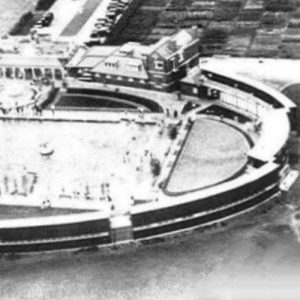
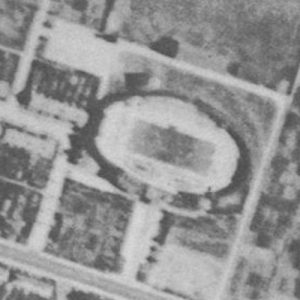
Baths and Bath Engineering May 1934
Floodlighting Open Air Swimming Pools by Gas
The Tottenham and District Gas Co. last summer installed a system of floodlighting in which gas was the illuminant at the Enfield Council’s open-air swimming pool. The pool is 200ft. long by 80ft., and the lamps installed are 12 “Kempar” low-pressure gas lamps. Each lamp, which has a candlepower of 6,000, is separately controlled by a special form of distance control device and is mounted on a 10ft. 6in. “Snowcrete” column.
As can be seen from the illustrations, the efficiency of the lighting is of a high order. Indeed, not only is the light evenly distributed over the whole surface of the pool, but it penetrates in such a way that the bottom of the bath can be clearly distinguished even at the deepest part.
In addition to the floodlighting of the pool itself, a system of general lighting of the whole area has been introduced. The lighting in this case is provided by eight 1,000 c.p. low- pressure gas lamps on 11ft. 6in. columns, and here again the effect is remarkably good. Some of the dressing boxes on the first floor are so well illuminated by the rays of these lamps that internal lighting has not been necessary. The Enfield Council considered alternative methods of illumination before deciding on gas.
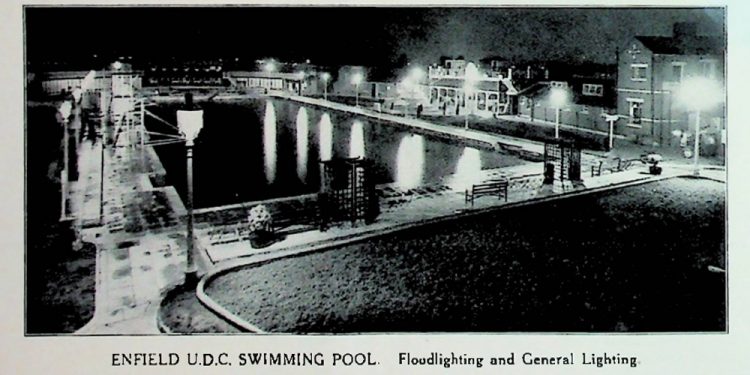
Baths and Bath Engineering January 1939
Enfield
A £5,500 scheme for a filtration and heating plant at Enfield Lock baths is being considered by the urban district council. The engineer and surveyor has submitted plans and has reported on the unbearable conditions during the summer months in the superintendent’s house, due to the fact that the living room is situate immediately over the present boiler house. The engineer is also submitting plans and estimates for the extension of the dressing accommodation.
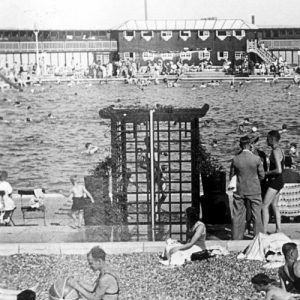

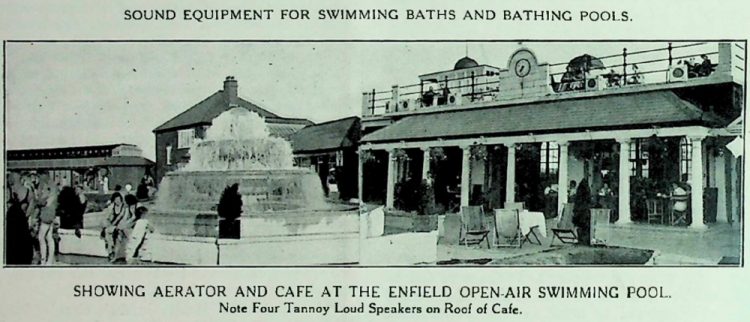
![]()